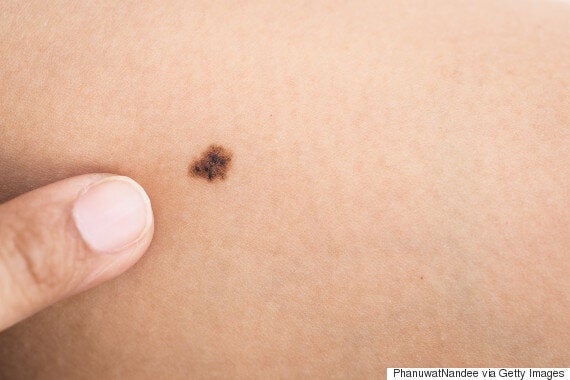People who have more than 11 moles on one arm could have a higher risk of skin cancer or melanoma, scientists have warned.
Counting the moles on a particular "proxy" body part - in this case the right arm - indicates the total number of moles on the entire body.
Researchers studied more than 3,000 female twins over an eight year period. They collected information on their skin type, freckles and moles.
The results were then tested against a wider study involving men and women.
Individuals with more than seven moles on their right arm were nine times more likely to have more than 50 moles on their body, while those with more than 11 moles were likely to have more than 100 moles on their body.
Having more than 100 moles on the body was believed to be a "strong predictor" of developing melanoma. The area above the right elbow was particularly predictive in the total body count of moles.

The researchers concluded: "We demonstrated that arm mole count of more than 11 is associated with a significant risk of having more than 100 moles, that is in itself a strong predictor of risk for melanoma."
This information could be vital in helping GPs to identify melanoma risk, said lead author Simone Ribero, of the department of twin research and genetic epidemiology at King's College London.
"The findings could have a significant impact for primary care, allowing GPs to more accurately estimate the total number of moles in a patient extremely quickly via an easily accessible body part," he said. "This would mean that more patients at risk of melanoma can be identified and monitored."
Melanoma is the third most common skin cancer in the UK, affecting more than 13,000 people each year. It accounts for more cancer deaths than all other skin cancers combined.
Dr Claire Knight, health information manager at Cancer Research UK, said that less than half of melanomas develop from existing moles.
"It's important to know what's normal for your skin and to tell your doctor about any change in the size, shape, colour or feel of a mole or a normal patch of skin," she said.
"And don't just look at your arms - melanoma can develop anywhere on the body, and is most common on the trunk in men and the legs in women."
The "ABCDE checklist", which you can learn more about here, has been designed to enable people to differentiate between a normal mole and a melanoma.
If you have any concerns please contact your GP.
The study was published in the British Journal of Dermatology and funded by Wellcome Trust.
